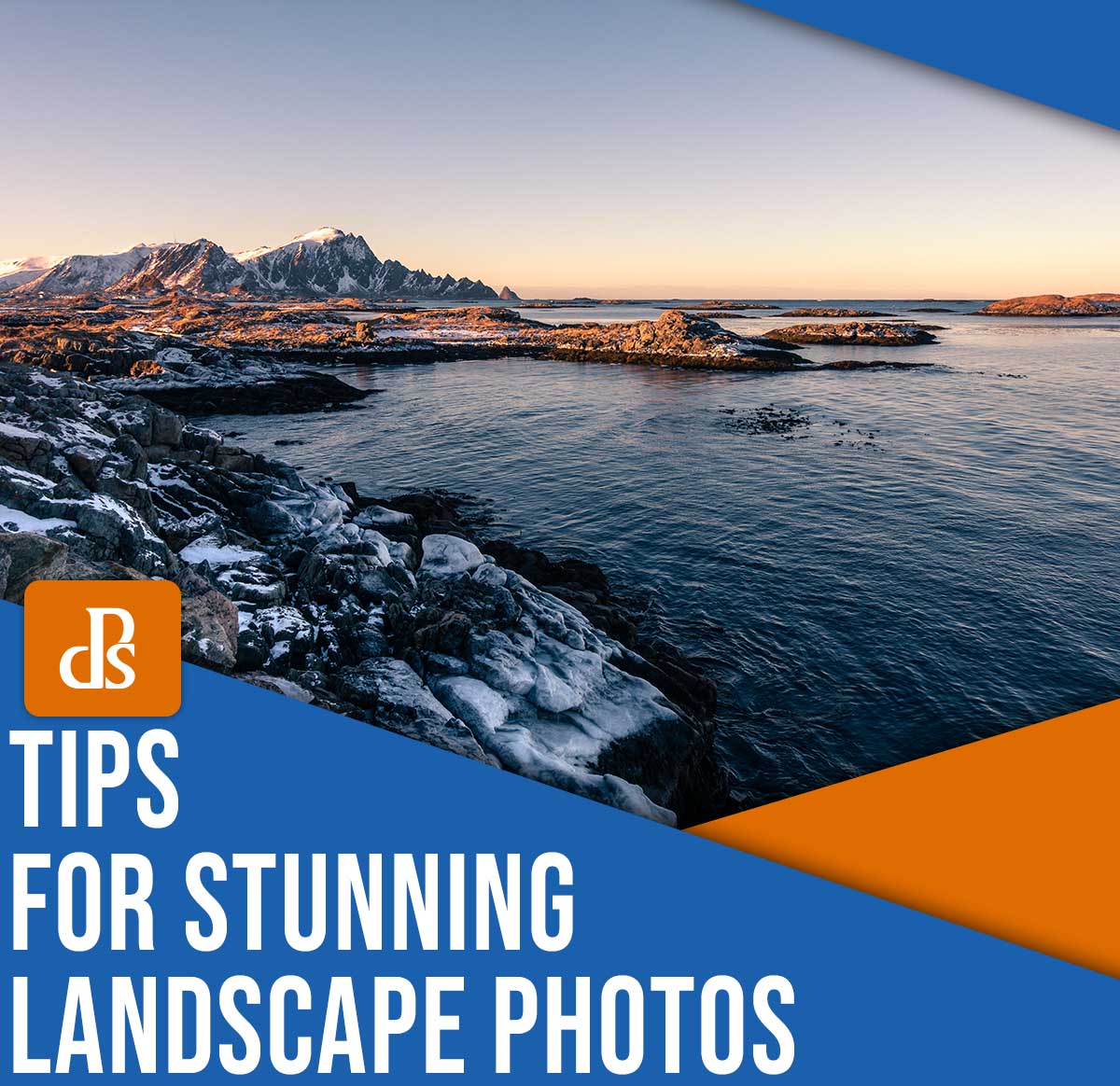
Landscape photography is breathtaking, exhilarating, and lots of fun – but it can also be difficult, disappointing, and downright frustrating, especially when you’re just starting out. Composition, lighting, camera settings, and more; it’s a lot to wrap your head around, but if you don’t use the right strategies and techniques, you’ll often end up with subpar images.
Fortunately, I’ve spent years capturing the landscape, and in this article, I share my best tips, including:
- Key landscape imaging accessories
- The best light for incredible shots
- Easy ways to improve your compositions
- Much more!
So if you’re ready to level up your landscape photos, then let’s dive right in!

1. Pick your location carefully (and scout in advance)
Landscape photography is as much about planning as it is about the actual process of photography. Don’t just wander around with your camera; instead, always have a clear idea of where you are planning to go and the time of day that will allow you to capture the best photographs.
Learn how to read maps and understand how you can utilize them to find the perfect location. You can use photography apps (like PhotoPills) to anticipate the sun’s direction long before you arrive on-site, and you can use Google Earth to check topography and even consider potential compositions.
Of course, the best way to pick locations is by visiting potential spots in advance, but due to time and travel constraints, that’s not always possible. Regardless of how you approach it, scouting and planning will ensure you can make the most of your time; it’ll also ensure that you get to your location safely and in plenty of time and that you find your way back (usually after sunset).
2. Be patient
It’s a fact of (landscape photography) life: The elements are practically always conspiring to ruin a perfectly composed photo.
Therefore, landscape photography requires patience. If you arrive on location only to find the sunset blocked by clouds, don’t head back home. Set up your composition and wait – just in case the clouds disperse just long enough to allow the sun to break through.
It’s important that you always plan for extra time at a location just in case waiting is necessary. Relatedly, check weather forecasts before leaving so you know what to expect!
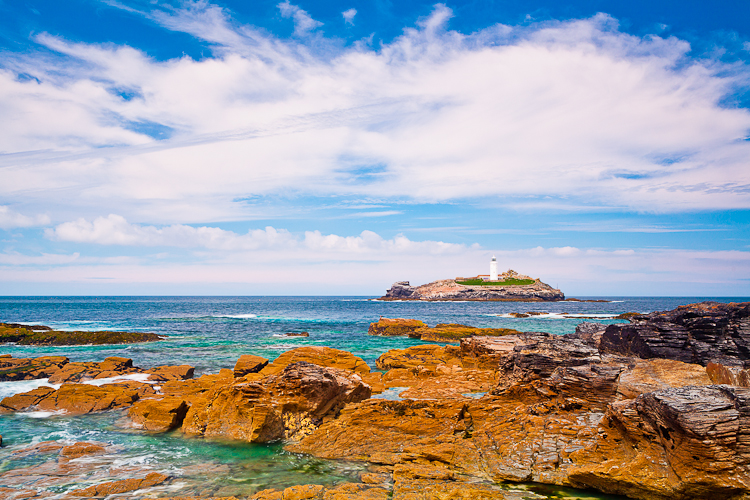
3. Don’t be lazy
One of the reasons we’re often stunned by an impressive landscape photo is because it features a scene captured in a unique, never-before-seen way. Such images often take significant effort to take, but they’re absolutely worth it. A photo taken from the top of a mountain, for instance, requires a huge amount of time and effort. But it displays a view that most people will never see for themselves.
So don’t rely on easily accessible viewpoints that everyone else can just drive up to and see. Instead, look for those unique spots that offer amazing views, even if they require real effort, determination, and planning to get there.
(On the other hand, don’t shy away from capturing an image just because the location was easy to access. The best landscape images sometimes are actually rather simple!)
4. Shoot in the best light
Light is one of the most important factors in any photograph, but this is especially true for landscape photography. If the light doesn’t do a scene justice, then it really won’t matter how great the location is or how you compose your photo; the image will fail.
So what’s the right light for landscape images? It does vary depending on your photographic goals, the weather, and the scene itself, but the best light is generally early in the morning or late in the afternoon (the golden hour). The time just before sunrise and just after sunset – known as the blue hour – is also very nice, though the lack of sun does lead to certain technical difficulties.
That said, don’t limit yourself based purely on the light. Part of the challenge of landscape photography is adapting and coping with different lighting conditions; for example, great landscape photos can be captured even on stormy or cloudy days. The key is to use the best light whenever you can and to make the most of the less-ideal light when you can’t.
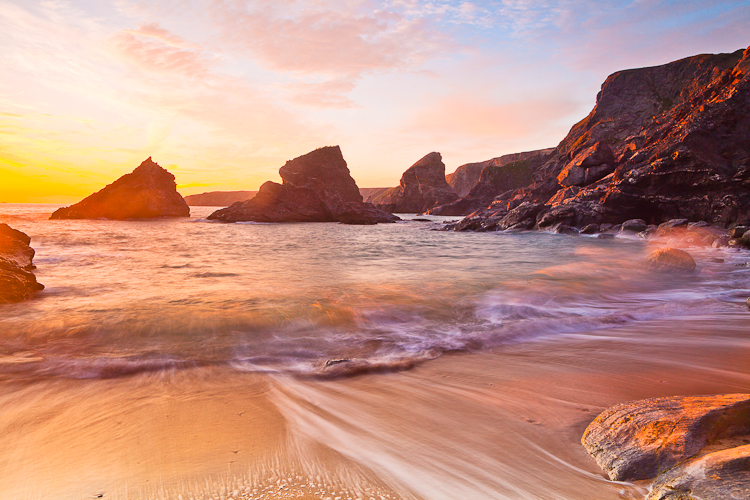
5. Always carry a tripod
Simply put, if you want to capture the best photographs, then a tripod is an essential piece of equipment. Much landscape shooting occurs in low-light conditions (e.g., early morning and late evening), and if you don’t use a tripod, you’ll need to increase your ISO, which will in turn degrade image quality.
Additionally, if you want to capture a scene using a long-exposure technique (when photographing moving clouds or water, for instance) then unless you have a tripod on hand, you simply won’t be capable of creating sharp photos.
Good landscape tripods can be pricey, but I encourage you to really invest. A sturdy model can last years, and it’ll dramatically increase your photographic capabilities!
6. Maximize the depth of field

The best landscape photos are usually sharp throughout, from the nearest foreground object to the most distant background element – and to achieve such a deep depth of field effect, you’ll need to carefully adjust your camera settings.
Start by setting your camera to Manual mode or Aperture Priority mode, then choose an aperture of f/8 or narrower. (For very deep scenes, you may want to shoot at f/13 or even beyond.)
Focus about a third of the way into the scene, then take a test shot. Zoom in on your LCD and check for sharpness in both the foreground and the background. If portions of the shot aren’t sharp, try narrowing the aperture or tweaking the point of focus. Eventually, you should get your desired effect, though if you’re struggling, you can always try using a focus-stacking technique where you capture multiple images and blend them together in Photoshop.
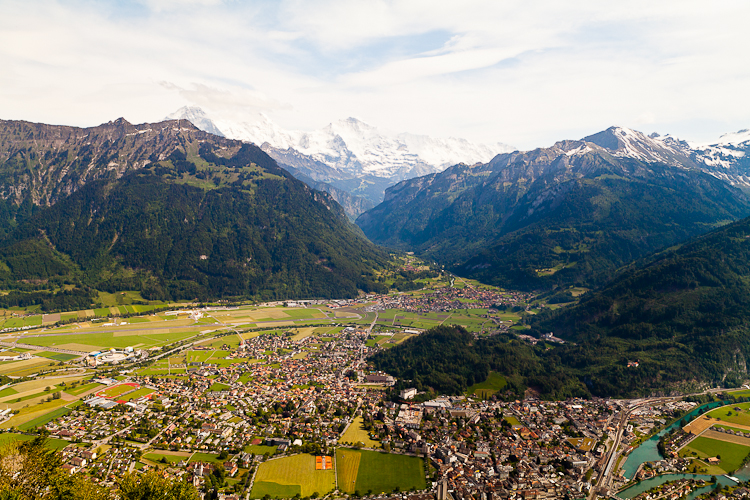
7. Use landscape composition techniques
Composition – that is, the arrangement of different elements in your images – is an essential part of good landscape photography. And while it’s possible to improve a composition through cropping, you should always aim to get it right when out in the field.
So how do you capture great compositions? Start by training yourself to use various techniques, such as the rule of thirds, leading lines, and symmetry. Learn the techniques, then experiment with applying them in real-time. As you practice, you’ll become better and better at honing your compositions, and the process will eventually become second nature.
8. Don’t forget to bring filters
Every landscape photographer should carry two types of filters:
Neutral density (ND) filters and polarizers. Often, you’ll find yourself needing to manipulate the available light, and that’s what these filters do best.
For example, if you’re taking photos that include water, you may wish to avoid reflections from the sun. A polarizer will minimize the reflections and consequently enhance the colors (i.e., the greens and blues of the water). It’s important to remember, however, that polarizing filters often have a limited effect if you’re facing into the scene or turned so the sun is at your back. For the most dramatic results, position yourself between 45° and 90° in relation to the sun.

Another big challenge in landscape photography? Getting an exposure that shows movement in clouds and water – even when the light is bright. A neutral density filter will block out the light so you can extend your shutter speed without overexposing your files.
Note that you should choose your filters carefully. There are a lot of cheap polarizing filters and ND filters available on Amazon and eBay, but they rarely work well and will instead decrease image quality. A good set of filters is expensive, but it’s definitely worth the investment.
9. Use the histogram
A histogram is a simple graph that displays the different tones in a file. The left side of the graph corresponds to dark tones, while the right side of the graph represents bright tones.
Most modern cameras allow you to access the image histogram moments after you’ve pressed the shutter button (and some cameras even let you see a histogram preview in advance!). So after (or before) you take each image, give the histogram a look. If the majority of the graph is shifted to one side, it’s an indication that the photo is too light or dark (i.e., overexposed or underexposed).
Overexposure or underexposure isn’t necessarily bad – some images look good either way or can be processed to look great – but if you find that the histogram peaks push up on the right or left edge of the graph, that’s a sign that you’ve lost detail in your images, which is rarely ideal. So if you do notice this issue, make a slight adjustment to your camera settings and reshoot.
10. Never settle for a good photo
This is true no matter the genre of photography. It doesn’t matter if it is a landscape or a portrait; if you can do it better, then you should.
But often because of the time and effort that landscape photography requires, people settle for a good photo rather than waiting or coming back later to take a great one. In my view, you should always aim to photograph your subject at the best possible time, in the best possible way, even if that means waiting or coming back later.
Of course, you may not always have the option to come back down the line, and if that’s the case, don’t simply ignore a landscape because you can’t capture a perfect shot. Aim to do your best, even if it’s not perfect.

11. Shoot in RAW format
This landscape photography tip is quick but essential:
If your camera is capable of capturing photos in RAW format, then you should always capture RAW files. They contain much more information, and they give far greater flexibility in post-production.
Remember, you can always save RAW files in any other formats after the fact, but you will not be able to save JPEGs as RAW files; if you shoot in JPEG, you’re ultimately limited by the level of compression.
12. Experiment
For all the techniques and rules that exist to help aid your compositional and settings choices, there is always room to experiment. The beauty of digital photography is that taking a photo isn’t wasting a negative (and costing money), so there is ample opportunity to break the rules and even your own style sometimes.
Even if the majority of the time the experimental images don’t work and you’re disappointed in the result, that’s completely okay. You’ll still learn something new – and every now and again, you might end up with a gem!
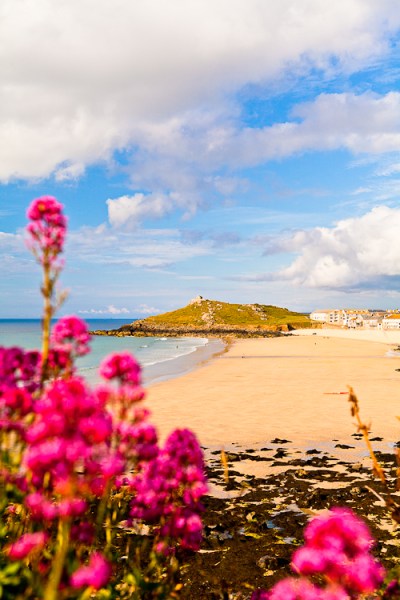
Landscape photography tips: final words
Landscape photography is one of the most rewarding genres you’ll ever encounter – and while it might seem difficult, with practice, hard work, and patience, you can capture stunning landscape photos that will look great in your portfolio.
So take some time and think about potential landscape opportunities. Go for a hike. Peruse Google Earth. Then spend some time with your camera!
Now over to you:
Do you have any landscape tips you want to share? Which of these techniques do you plan to use first? Share your thoughts in the comments below!


